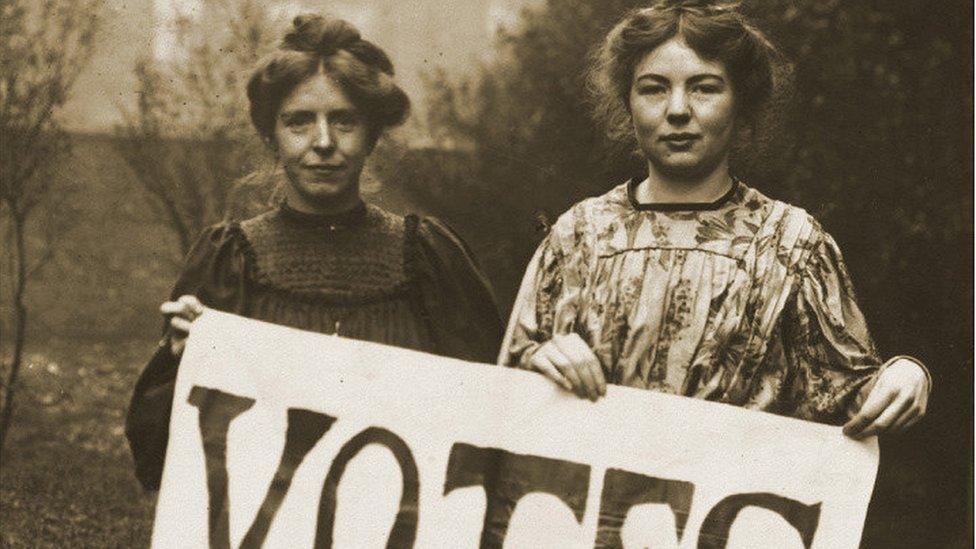Suffragette statues mark 100 years of women's first vote
- Published

The statue of Emmeline Pankhurst is in St Peter's Square
Statues of leading suffragettes Emmeline Pankhurst and Annie Kenney have been unveiled in their home towns to mark a centenary since British women first voted in a general election.
Pankhurst's statue was unveiled in Manchester - the birthplace of the campaign - by her great-granddaughter.
Actress Maxine Peake attended Oldham's unveiling of Kenney's statue.
Kenney was the only working class woman to hold a senior position in the Women's Social and Political Union.
Hundreds of women's rights activists marched in parades as part of the events.
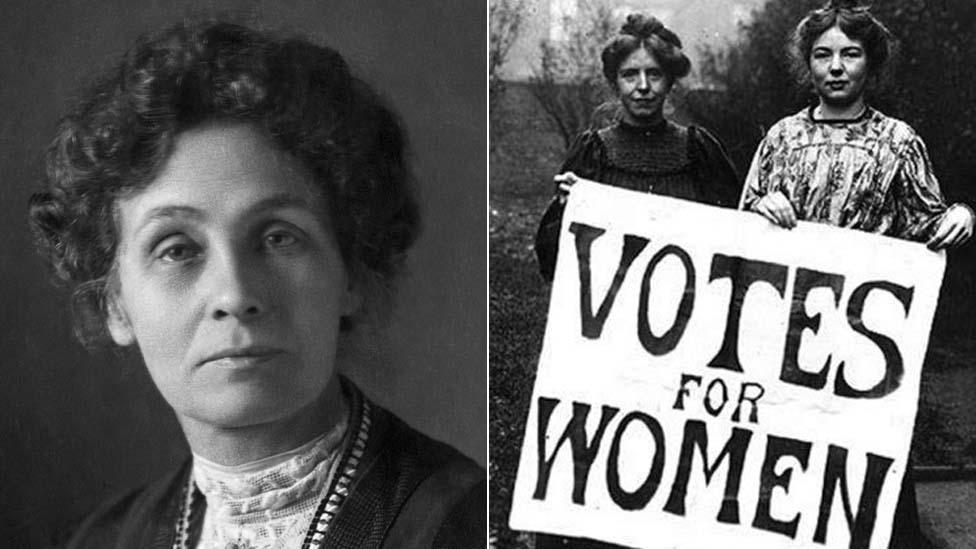
Emmeline Pankhurst (left) and Annie Kenney (centre) were key campaigners
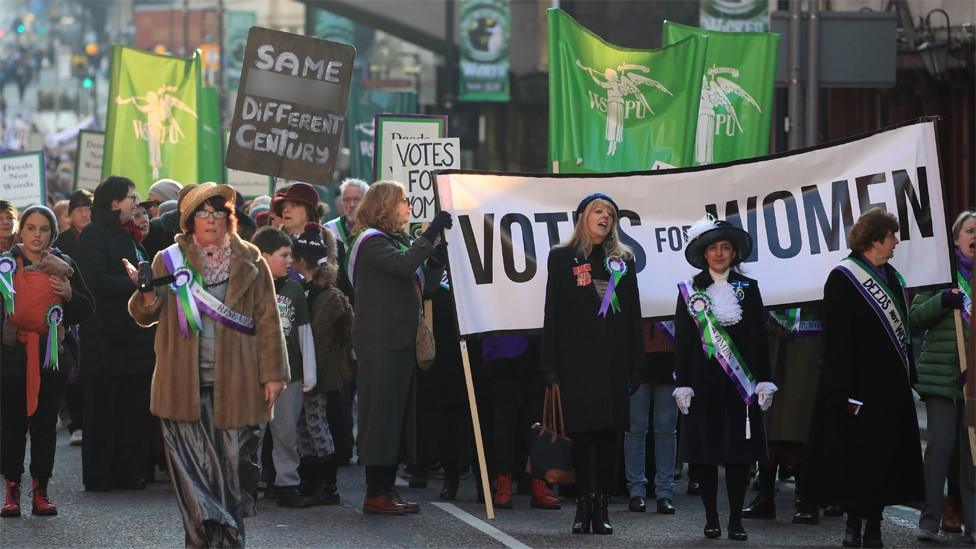
Women's rights activists marched ahead of the events
Born in 1858 to a family of campaigners, Pankhurst helped found the Women's Social and Political Union in 1903, which called for the right for women to vote.
Latest news from the North West
The WSPU gained notoriety for activities including protests, smashing windows, vandalism, arson and prison hunger strikes.
Its members were the first to be called suffragettes.
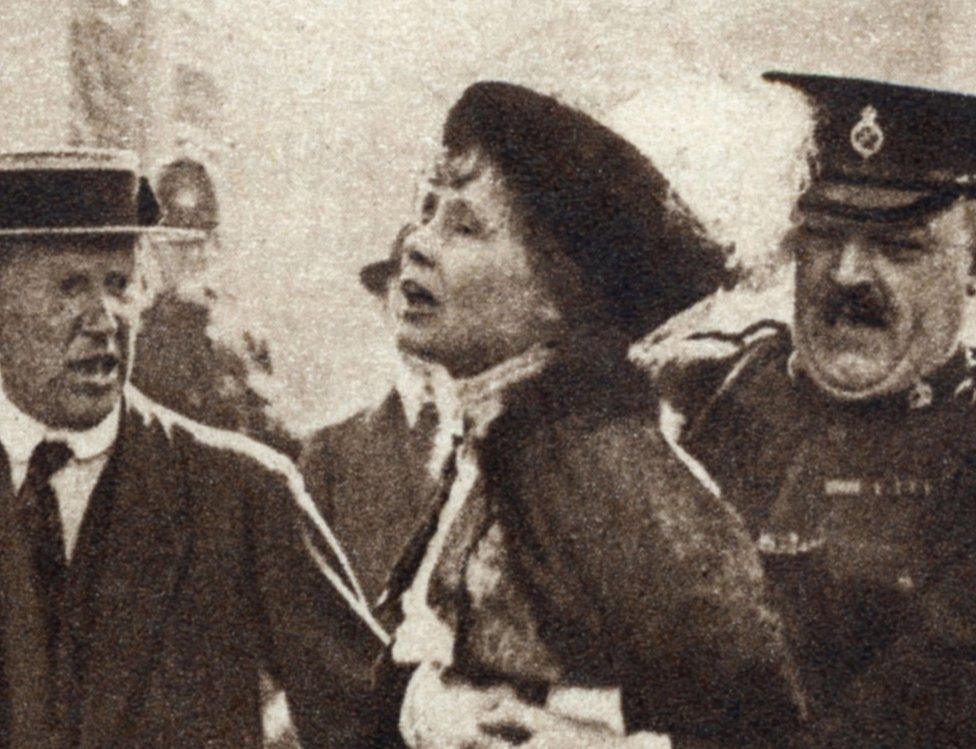
Emmeline Pankhurst was arrested outside Buckingham Palace in 1914
In 1918, the UK's Representation of the People Act gave votes to some women over 30.
It was on 14 December of the same year they first exercised the right in a general election.
Pankhurst died on 14 June 1928, shortly after women were granted equal voting rights with men.
Her great-granddaughter Helen Pankhurst, who unveiled the statue in St Peter's Square, said: "That she should be unveiled exactly 100 years since the day some women first went to the polls and a few first stood as MPs in a UK election is especially poignant."
Addressing people at the event, she added: "It's welcoming her back with a march - a march with the younger generation in such evidence, a march with thousands of you."
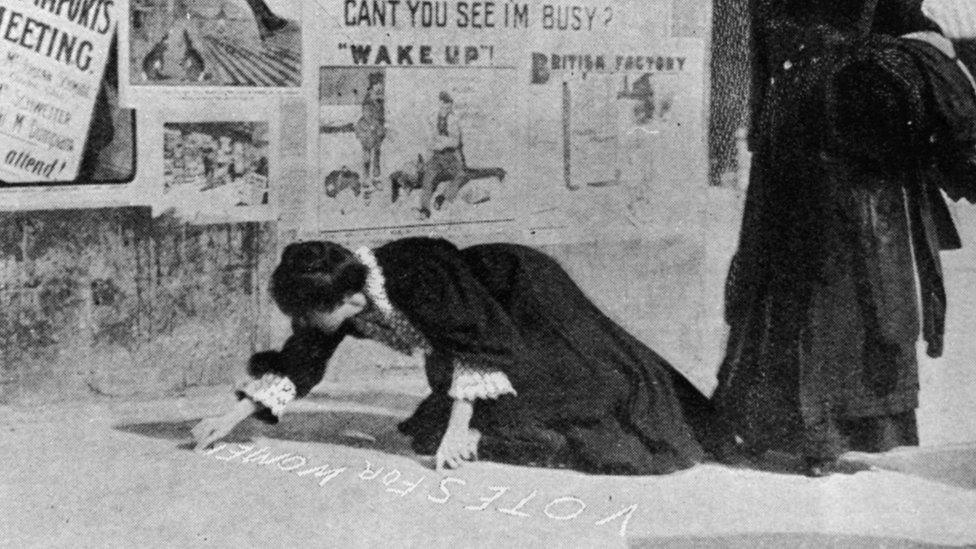
Annie Kenney chalks "votes for women" on a pavement in 1907
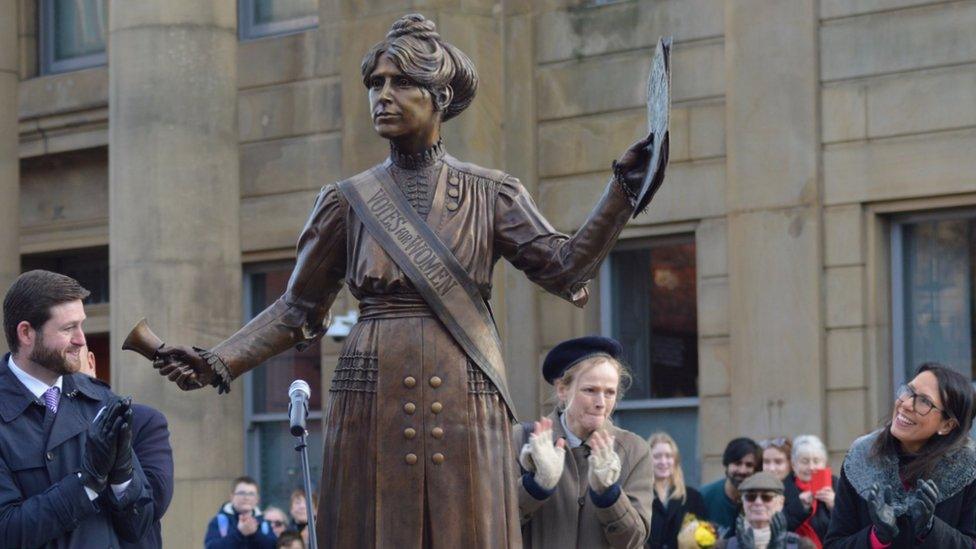
Maxine Peake (centre) joined Oldham MPs Jim McMahon and Debbie Abrahams
Often seen as an "underestimated" suffragette, Oldham-born Kenney worked in a cotton mill from the age of 10.
In 1905, she and Christabel Pankhurst - one of Emmeline's daughters - interrupted a Manchester rally to ask Winston Churchill, then MP for Oldham, and his Liberal Party colleague Sir Edward Grey if they believed women should have the right to vote.
They were thrown out and jailed. It was seen as a pivotal moment in the campaign for the vote, when the suffragettes moved towards more radical, direct protest.
Pankhurst's statue is the first of a woman in Manchester since a sculpture of Queen Victoria was unveiled in Piccadilly Gardens in 1901.
The campaigner was selected by the public for the honour from a list of 20 inspirational Mancunian women.
A statue of the activist was unveiled in 1930, external by then Prime Minister Stanley Baldwin near the Houses of Parliament in London.
- Published11 September 2018
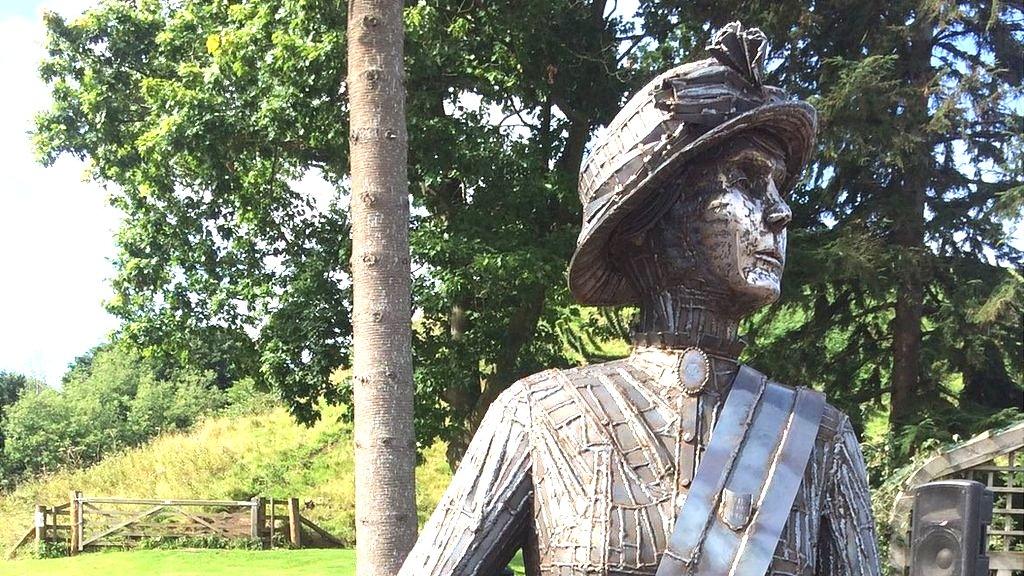
- Published1 October 2018
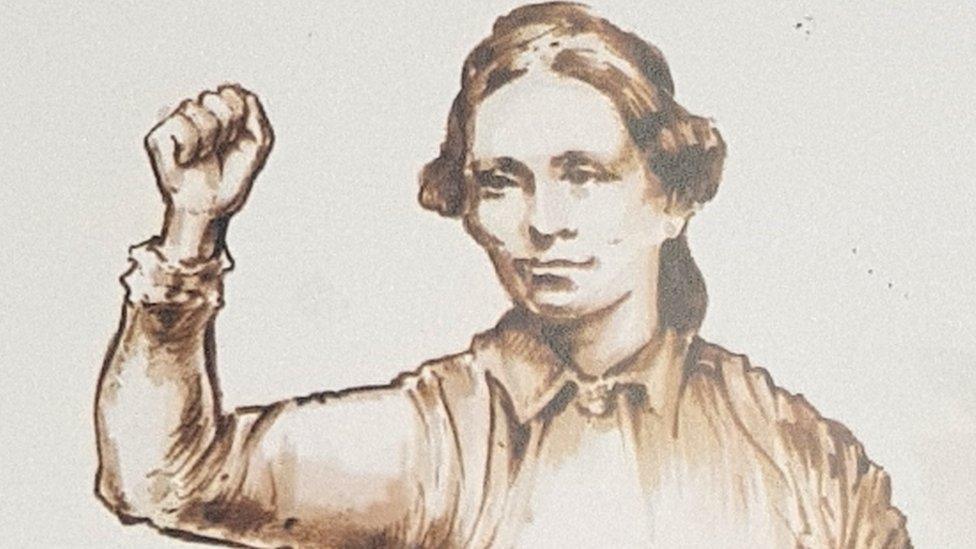
- Published21 October 2018
